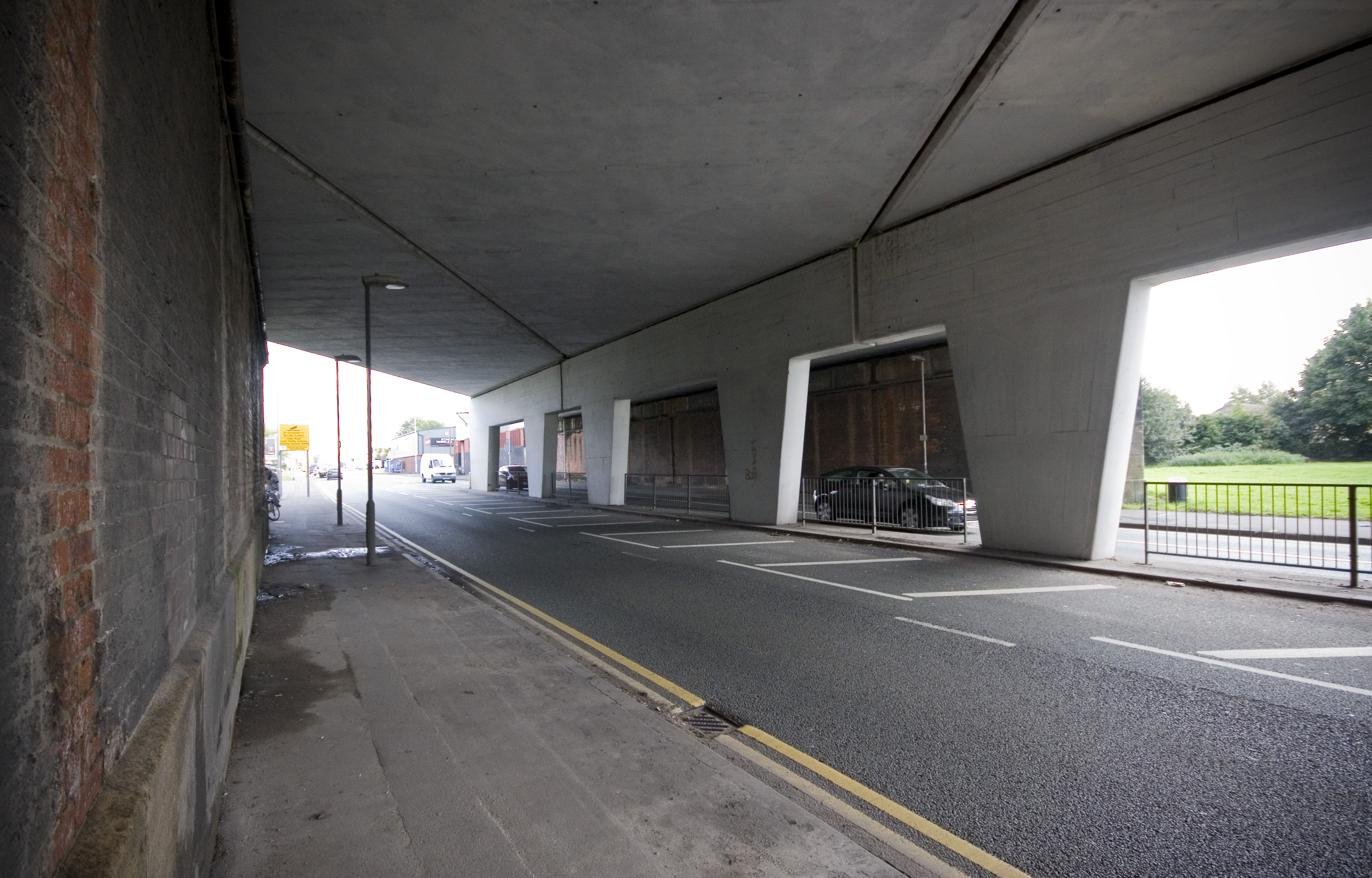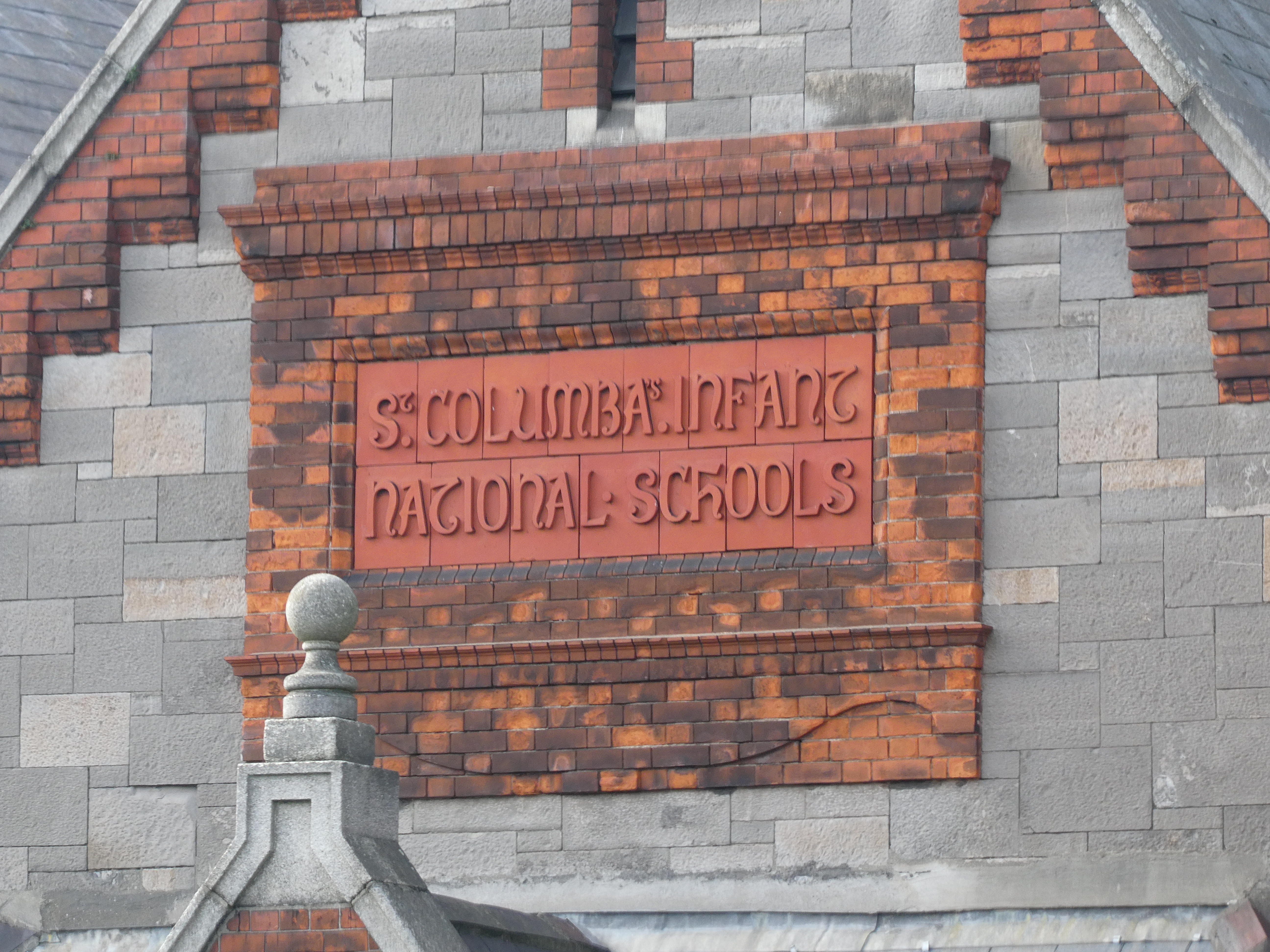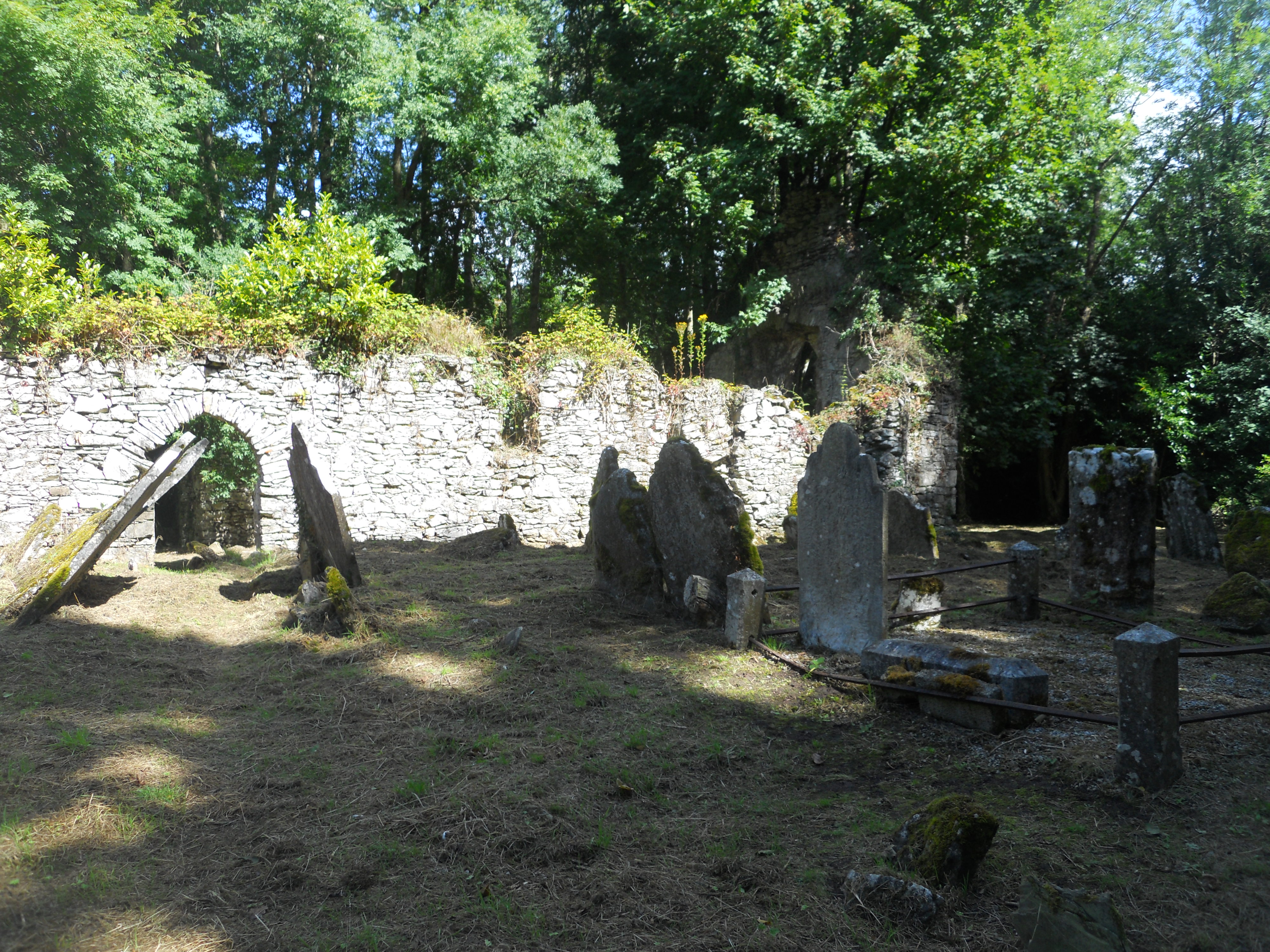|
Ladysbridge
Ladysbridge (), known for census purposes as Knockglass (), is a village in County Cork, Ireland. As of the 2016 census, the area had a population of 658 people. The village of Ladysbridge lies at the junction of the R632 and R633 regional roads, approximately south of Castlemartyr. Ladysbridge, sometimes spelled Lady's Bridge, is also connected to Castlemartyr via a way-marked nature trail. This walking route crosses the nearby Womanagh River on a pedestrian bridge. Ightermurragh Castle is a 17th-century fortified house which is located on the south bank of the Womanagh River approximately east of Ladysbridge village. Within the village itself, a number of buildings date from the 19th century, including the former national school (dated 1891) and Ladysbridge Roman Catholic church (dated to c.1820). This church, which is dedicated to Saint Mary, is in the parish of Ballymacoda and Ladysbridge and the Roman Catholic Diocese of Cloyne. The local GAA club, Fr. O'Neill's GAA, ... [...More Info...] [...Related Items...] OR: [Wikipedia] [Google] [Baidu] |
R632 Road (Ireland)
The R632 road is a Regional road (Ireland), regional road in County Cork, Ireland. It travels from Castlemartyr to Shanagarry, via Ladysbridge. The R632 is long. References Regional roads in the Republic of Ireland Roads in County Cork {{Ireland-road-stub ... [...More Info...] [...Related Items...] OR: [Wikipedia] [Google] [Baidu] |
Manchester Martyrs
The "Manchester Martyrs" () is a term used by Irish nationalists to refer to three men—William Philip Allen, Michael Larkin and Michael O'Brien—who were executed following their conviction of murder in 1867 after an attack on a police van in Manchester, England, in which a police officer was accidentally shot dead, an incident that was known at the time as the "Manchester Outrages". The three were members of the Irish Republican Brotherhood, also known as the Fenians, an organisation dedicated to ending British rule in Ireland, and were among a group of 30–40 Fenians who attacked a horse-drawn police van transporting two arrested leaders of the Brotherhood, Thomas J. Kelly and Timothy Deasy, to Belle Vue Gaol. Police Sergeant Charles Brett, travelling inside with the keys, was shot and killed while looking through the keyhole of the van as the attackers attempted to force the door open by shooting the lock. Kelly and Deasy were released after another prisoner in the ... [...More Info...] [...Related Items...] OR: [Wikipedia] [Google] [Baidu] |
R633 Road (Ireland)
The R633 road is a regional road in Ireland, located in County Cork County Cork ( ga, Contae Chorcaí) is the largest and the southernmost county of Ireland, named after the city of Cork, the state's second-largest city. It is in the province of Munster and the Southern Region. Its largest market towns are .... References Regional roads in the Republic of Ireland Roads in County Cork {{Ireland-road-stub ... [...More Info...] [...Related Items...] OR: [Wikipedia] [Google] [Baidu] |
Womanagh River
The Womanagh River (Irish: ''An Uaimneach'') is a river in County Cork, Ireland. Course The Womanagh River rises on Knockastrickeen and flows eastwards through Ladysbridge and loops around northwards, eastwards and southwards. It passes under the R633 at the Cromponn Bridge and flows into the Celtic Sea The Celtic Sea ; cy, Y Môr Celtaidd ; kw, An Mor Keltek ; br, Ar Mor Keltiek ; french: La mer Celtique is the area of the Atlantic Ocean off the southern coast of Ireland bounded to the east by Saint George's Channel; other limits includ .... Wildlife Fish include brown trout, salmon, brook lamprey, stickleback and stone loach. Archaeology A bronze sword was found in the river in 1883. References Rivers of County Cork {{Ireland-river-stub ... [...More Info...] [...Related Items...] OR: [Wikipedia] [Google] [Baidu] |
Gaelic Athletics Association
The Gaelic Athletic Association (GAA; ga, Cumann Lúthchleas Gael ; CLG) is an Irish international amateur sporting and cultural organisation, focused primarily on promoting indigenous Gaelic games and pastimes, which include the traditional Irish sports of hurling, camogie, Gaelic football, Gaelic handball and rounders. The association also promotes Irish music and dance, as well as the Irish language. As of 2014, the organisation had over 500,000 members worldwide, and declared total revenues of €65.6 million in 2017. The Games Administration Committee (GAC) of the Gaelic Athletic Association (GAA) governing bodies organise the fixture list of Gaelic games within a GAA county or provincial councils. Gaelic football and hurling are the most popular activities promoted by the organisation, and the most popular sports in the Republic of Ireland in terms of attendances. Gaelic football is also the second most popular participation sport in Northern Ireland. The women's versio ... [...More Info...] [...Related Items...] OR: [Wikipedia] [Google] [Baidu] |
Roman Catholic Diocese Of Cloyne
The Diocese of Cloyne ( ga, Deoise Chluana) is a Roman Catholic diocese in Ireland. It is one of six suffragan dioceses in the ecclesiastical province of Cashel (also known as Munster). Geographic remit Cloyne diocese is located in the northern and eastern parts of County Cork. The major towns in the diocese are Cobh, Fermoy, Mallow, Midleton and Youghal. The population is over 120,000 people. History The diocese has its beginnings in the monastic settlement of Saint Colman of Cloyne in Cloyne, east Cork. A round tower and pre-reformation cathedral still stand at this site. The diocese was erected in A.D. 580. Colman, son of Lenin, lived from 522 to 604 A.D. He had been a poet and bard at the court of Caomh, King of Munster at Cashel. It was St. Brendan of Clonfert who induced Colman to become Christian. He embraced his new faith eagerly and studied at the monastery of St. Jarlath in Tuam. He later preached in east Cork and established his own monastic settlement at ... [...More Info...] [...Related Items...] OR: [Wikipedia] [Google] [Baidu] |
Saint Mary
Mary; arc, ܡܪܝܡ, translit=Mariam; ar, مريم, translit=Maryam; grc, Μαρία, translit=María; la, Maria; cop, Ⲙⲁⲣⲓⲁ, translit=Maria was a first-century Jewish woman of Nazareth, the wife of Joseph and the mother of Jesus. She is a central figure of Christianity, venerated under various titles such as virgin or queen, many of them mentioned in the Litany of Loreto. The Eastern and Oriental Orthodox, Church of the East, Catholic, Anglican, and Lutheran churches believe that Mary, as mother of Jesus, is the Mother of God. Other Protestant views on Mary vary, with some holding her to have considerably lesser status. The New Testament of the Bible provides the earliest documented references to Mary by name, mainly in the canonical Gospels. She is described as a young virgin who was chosen by God to conceive Jesus through the Holy Spirit. After giving birth to Jesus in Bethlehem, she raised him in the city of Nazareth in Galilee, and was in Jerusalem ... [...More Info...] [...Related Items...] OR: [Wikipedia] [Google] [Baidu] |
Roman Catholic
Roman or Romans most often refers to: *Rome, the capital city of Italy *Ancient Rome, Roman civilization from 8th century BC to 5th century AD *Roman people, the people of ancient Rome *'' Epistle to the Romans'', shortened to ''Romans'', a letter in the New Testament of the Christian Bible Roman or Romans may also refer to: Arts and entertainment Music * Romans (band), a Japanese pop group * ''Roman'' (album), by Sound Horizon, 2006 * ''Roman'' (EP), by Teen Top, 2011 *" Roman (My Dear Boy)", a 2004 single by Morning Musume Film and television * Film Roman, an American animation studio * ''Roman'' (film), a 2006 American suspense-horror film * ''Romans'' (2013 film), an Indian Malayalam comedy film * ''Romans'' (2017 film), a British drama film * ''The Romans'' (''Doctor Who''), a serial in British TV series People *Roman (given name), a given name, including a list of people and fictional characters *Roman (surname), including a list of people named Roman or Romans *Ῥωμ� ... [...More Info...] [...Related Items...] OR: [Wikipedia] [Google] [Baidu] |
National School (Ireland)
In Ireland, a national school () is a type of primary school that is financed directly by the state, but typically administered jointly by the state, a patron body, and local representatives. In national schools, most major policies, such as the curriculum and teacher salaries and conditions, are managed by the state through the Department of Education and Skills. Minor policies of the school are managed by local people, sometimes directed by a member of the clergy, as representative of the patron, through a local 'board of management'. Most primary schools in Ireland fall into this category, which is a pre-independence concept. While there are other forms of primary school in Ireland, including a relatively small number of private denominational schools which do not receive state aid, there were just 34 such private primary schools in 2012, with a combined enrollment of 7,600 pupils. By comparison there were, as of 2019, over 3,200 national schools in Ireland with a combined en ... [...More Info...] [...Related Items...] OR: [Wikipedia] [Google] [Baidu] |
Republic Of Ireland
Ireland ( ga, Éire ), also known as the Republic of Ireland (), is a country in north-western Europe consisting of 26 of the 32 counties of the island of Ireland. The capital and largest city is Dublin, on the eastern side of the island. Around 2.1 million of the country's population of 5.13 million people resides in the Greater Dublin Area. The sovereign state shares its only land border with Northern Ireland, which is part of the United Kingdom. It is otherwise surrounded by the Atlantic Ocean, with the Celtic Sea to the south, St George's Channel to the south-east, and the Irish Sea to the east. It is a unitary, parliamentary republic. The legislature, the , consists of a lower house, ; an upper house, ; and an elected President () who serves as the largely ceremonial head of state, but with some important powers and duties. The head of government is the (Prime Minister, literally 'Chief', a title not used in English), who is elected by the Dáil and appointed by ... [...More Info...] [...Related Items...] OR: [Wikipedia] [Google] [Baidu] |
Castlemartyr
Castlemartyr (, formerly anglicised as ''Ballymarter'' or ''Ballymartyr'') is a village in County Cork, Ireland. It is located 25 minutes east of Cork city, 10 km (6 mi) east of Midleton, 16 km (10 mi) west of Youghal and 6 km (4 mi) from the coast. Approximately 1,600 people live in the village and its hinterland. It is situated on the N25 national primary road and the R632 regional road. It is home to a number of community and sporting organisations, a 15th-century tower house (Castlemartyr Castle, now a ruin), and an 18th-century country house (Castlemartyr House, now a hotel). History Pre-history Traces of ancient civilisation, including from the Bronze Age, are to be found in the vicinity of Castlemartyr. This includes a group of tumuli (or barrow mounds), including three examples in the townland of Ballyvorisheen. There is also evidence of the early inhabitants' attempts to defend themselves and their livestock against marauders and the thr ... [...More Info...] [...Related Items...] OR: [Wikipedia] [Google] [Baidu] |
Provinces Of Ireland
There have been four Provinces of Ireland: Connacht (Connaught), Leinster, Munster, and Ulster. The Irish language, Irish word for this territorial division, , meaning "fifth part", suggests that there were once five, and at times Kingdom_of_Meath, Meath has been considered to be the fifth province; in the medieval period, however, there were often more than five. The number of provinces and their delimitation fluctuated until 1610, when they were permanently set by the English administration of James VI and I, James I. The provinces of Ireland no longer serve administrative or political purposes but function as historical and cultural entities. Etymology In modern Irish language, Irish the word for province is (pl. ). The modern Irish term derives from the Old Irish (pl. ) which literally meant "a fifth". This term appears in 8th-century law texts such as and in the legendary tales of the Ulster Cycle where it refers to the five kingdoms of the "Pentarchy". MacNeill enumer ... [...More Info...] [...Related Items...] OR: [Wikipedia] [Google] [Baidu] |






